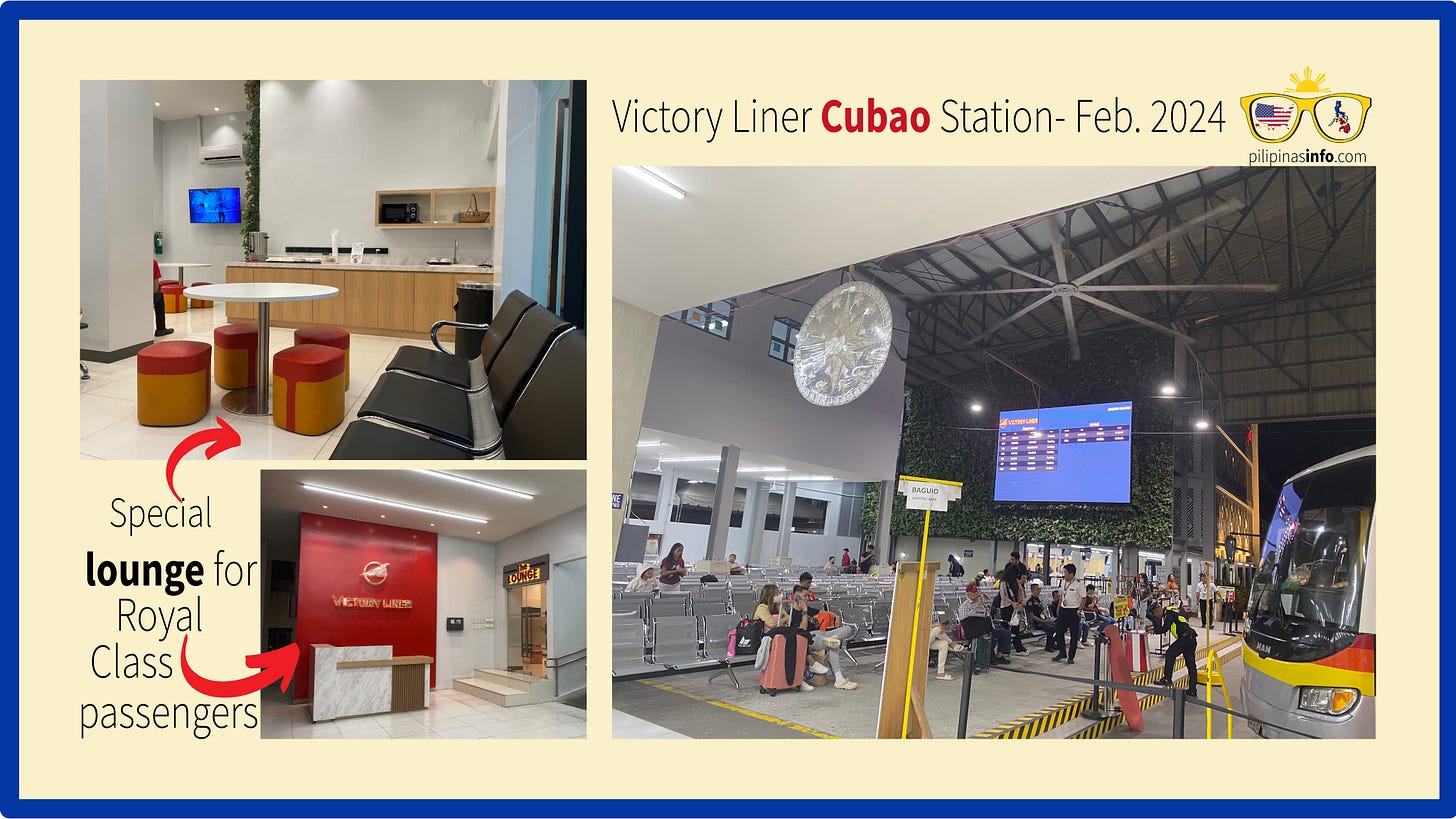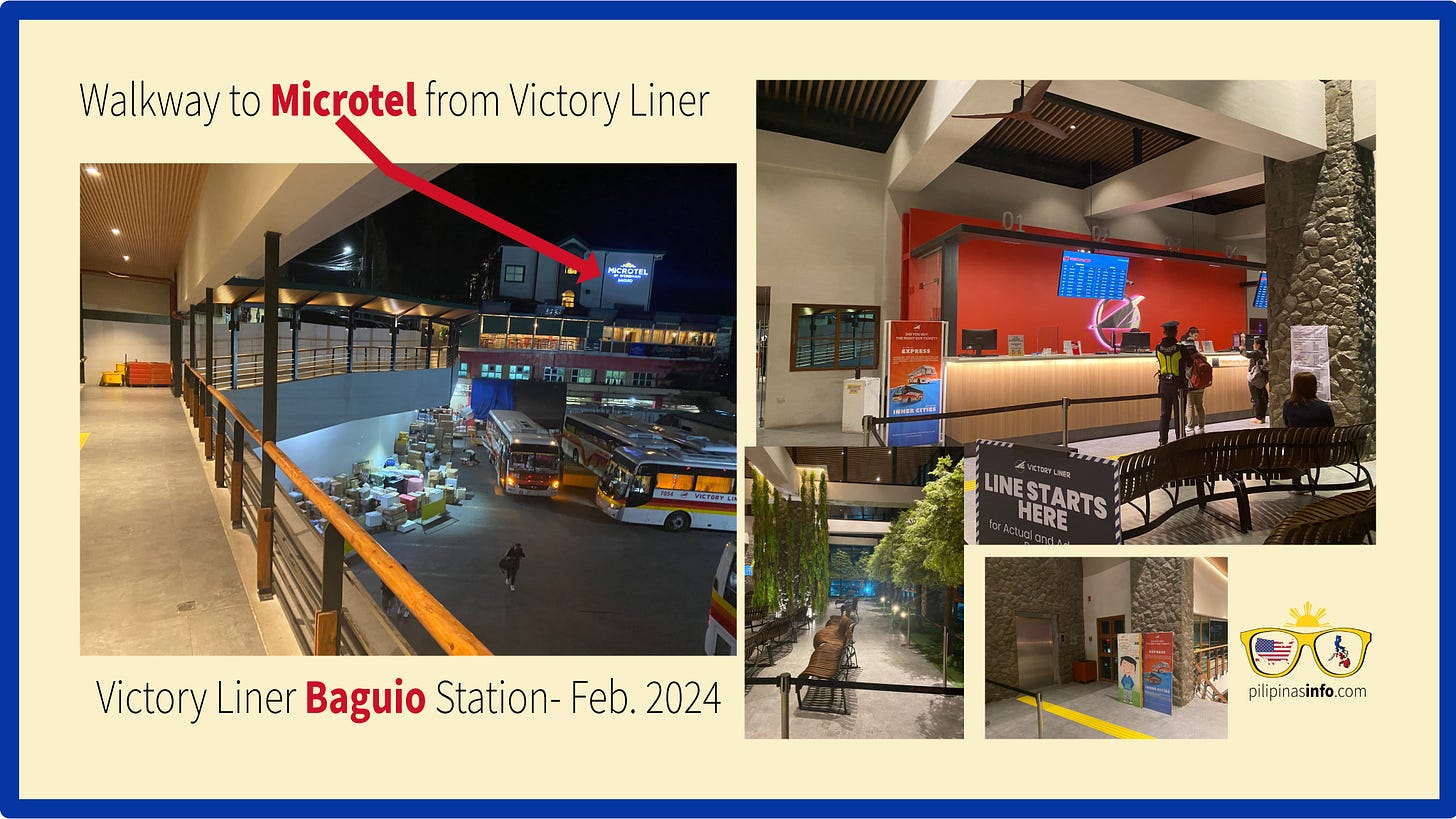Sleeper Bus from Manila to Baguio City and staying at Microtel (connected by a walkway from the bus station)
Is Victory Liner Royal Class Bus and Microtel worth the extra expense?
I miss Baguio City, the summer capital of the Philippines. When I found out that Victory Liner now has a sleeper bus, I tried it. In this post, I’ll share what happened when I, together with a couple of friends, rode Victory Liner’s Royal Class Sleeper Bus and stayed at the Microtel, a hotel connected by a walkway from Victory’s Baguio bus station.
Sleeper Bus Defined
Google AI gave me this definition of of a sleeper bus: “A sleeper bus is a coach designed for passengers to sleep in, and is often more comfortable than medium-distance airline travel. Sleeper buses are also known as night buses, night coaches, entertainer coaches, band buses, crew buses, NightRider, and sleeper coaches.” Simply put, it should allow passengers to comfortably sleep while traveling at night. My friends and I chose the 12:15 AM departure from Cubao and paid 1,500 pesos each or less than $27. An ordinary air-conditioned bus fare is only 626 pesos which is 50% less than the sleeper bus fee.
The Cubao station is spacious and modern. Royal Class passengers can stay in a special lounge where free coffee is offered. When it was almost 12:15 AM, somebody attired as an airline steward called the passengers.
Airline Experience within a Bus
It looked like a regular bus from the outside. When we went inside, it has weird looking compartments that have chairs that seemed larger than economy-sized airplane seats. There are lower and upper decks, each one with privacy curtains, food racks, and personal lights. The conductor imitated an airline steward while serving a light snack, water and giving out blankets.
I decided to dim my compartment and sleep if I can. Surprisingly, I was awaken by the conductor’s announcement that we are now in Baguio City, at around 4:00 AM. I was able to comfortably sleep on the lower deck! One of my friends transferred to the upper deck and complained that she barely slept. Thus, if you want to increase your chances of sleeping, make sure you get a lower deck chair.
From the Bus Station to Microtel via a Walkway
Victory Liner’s Baguio station is also modern looking with fake looking plants on the walkway. The ticket station and public restrooms are on the second floor. From there, it was easy to see the Mircrotel logo and we simply trekked the walkway and found our hotel. However, it was only 4:30 AM and check-in is at 2:00 PM. We were too early.
Undeterred, we tried to check-in. We were charged 5,900 pesos ($105) for a one-night stay. The receptionist told us he can check us in for an additional fee because it was too early. The amount he gave us was around 2,500 pesos. I asked for discounts and he told me he can’t give any because we booked online. Still, I asked for any other way to lessen the price. After a few minutes, he decided to waive our early check in fee. We immediately went to our rooms and slept.
Gained an Extra Day
Although we booked only one night, it seemed we slept twice in the hotel because of our early check-in. Half of our sleeping hours were spent in the bus during our 4-hour travel and the other half, was in the hotel. So was it worth it? Well, we gained an extra day to explore Baguio City and it was truly convenient to just walk to the hotel from the bus station. The hotel convenience and bus amenities gave us a wonderful start for our Baguio adventure. Next, I’ll share what I think of the Baguio tourist sites after being away for years.
Note: My Philippine travel posts continue up to end of 2024. Afterwards, I will switch my focus to educational issues based on my dissertation and classroom experiences.
I will follow a book-in-progress style with some posts exclusively for paid subscribers only. My goals are:
to highlight the Filipino-American relationship in education, specifically about the establishment of special education in the Philippines
to share historical details that I discovered in the DC area that is relatively unknown in the Philippines and the USA that might shed light on why there is a special relationship between the two countries
to introduce Delia Delight Rice, who established the first SPED school in the Philippines, to more educators
to see parallel educational strategies that Ms. Rice did and what resourceful Filipino teachers in the USA are doing to survive in the classroom
My goals might change through time depending on your feedback. If you are not an educator, please refer this online newsletter to others who would be interested in this topic. Thank you for reading and supporting Pilipinas Info.
Invitation for Partners
Support Philippine-Info newsletter by subscribing. Consider being a Philippine Info Partner for only $120 per year and you will receive:
copy of the chapter about Delia Delight Rice in the History of SPED in the Philippines dissertation
Mass Reading Assessment report that I did for a Quezon City High School that revealed a common teaching mistake that can easily be corrected
Quarterly PDF copies of posts about Filipino-American relationship in education
free paperback copy of the History of SPED in the Philippines once it is published via Amazon’s KDP






